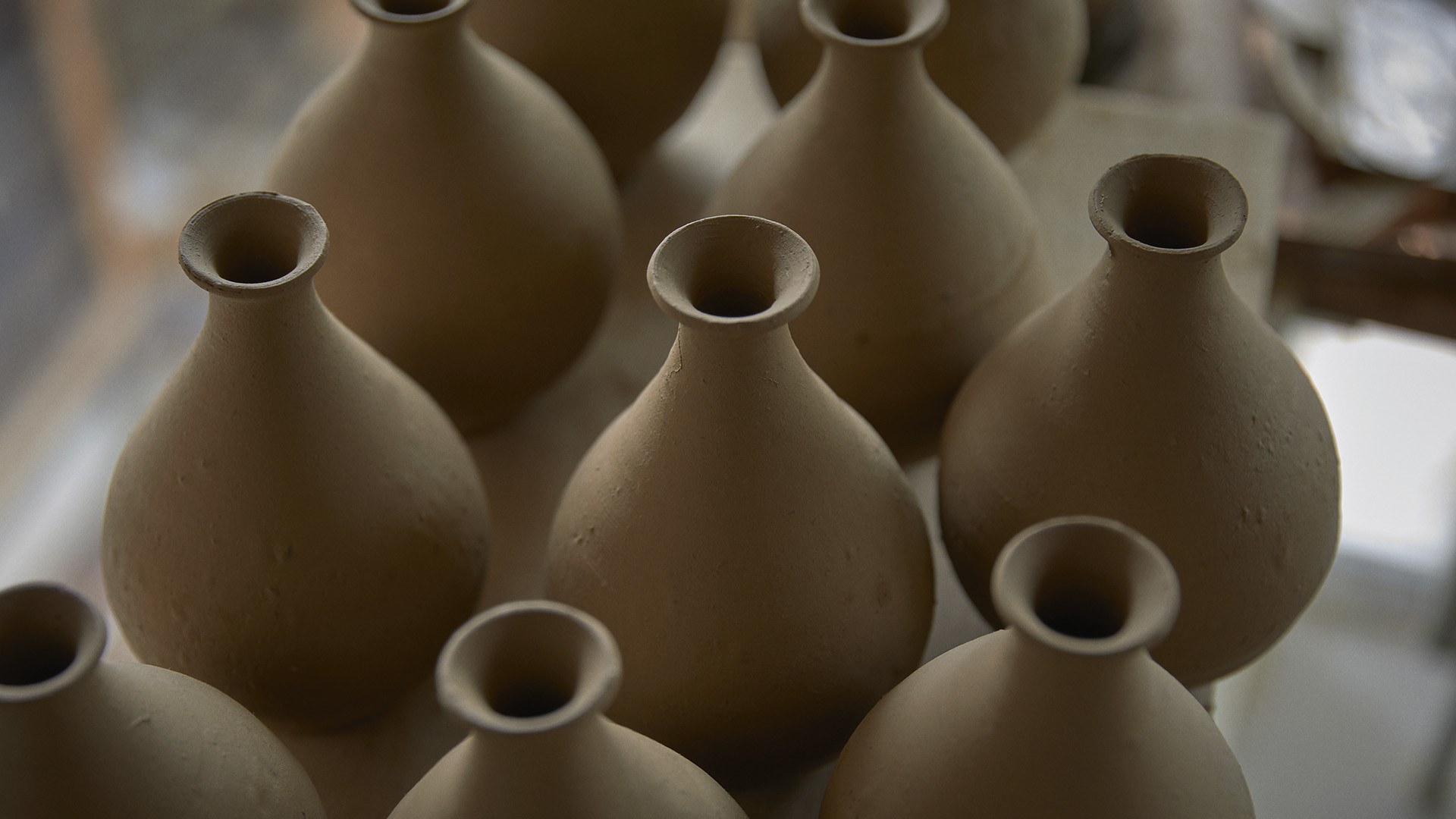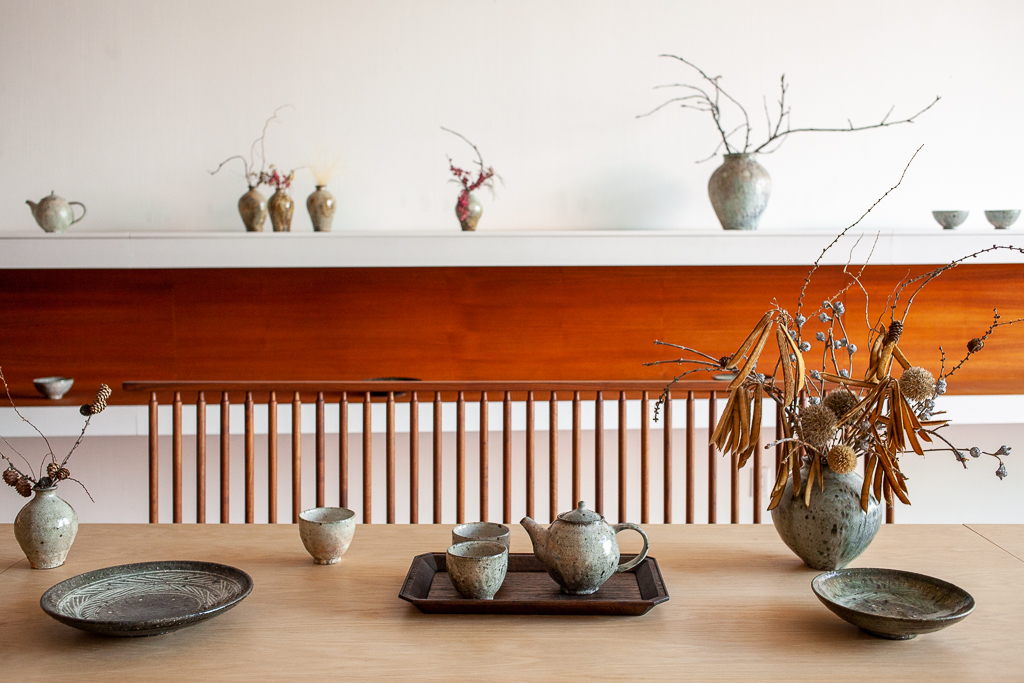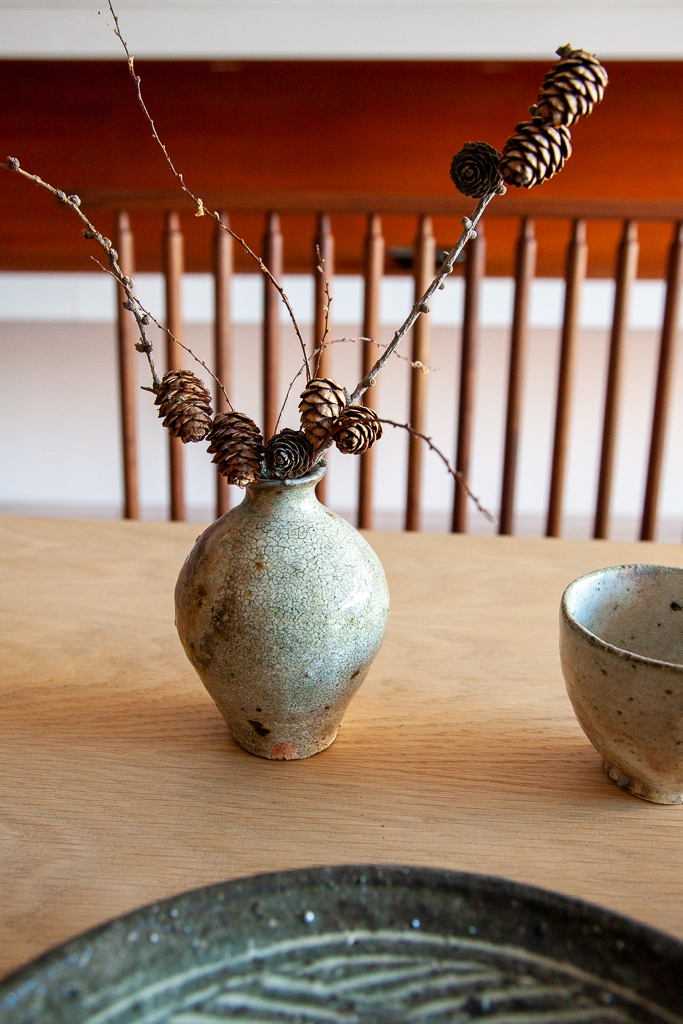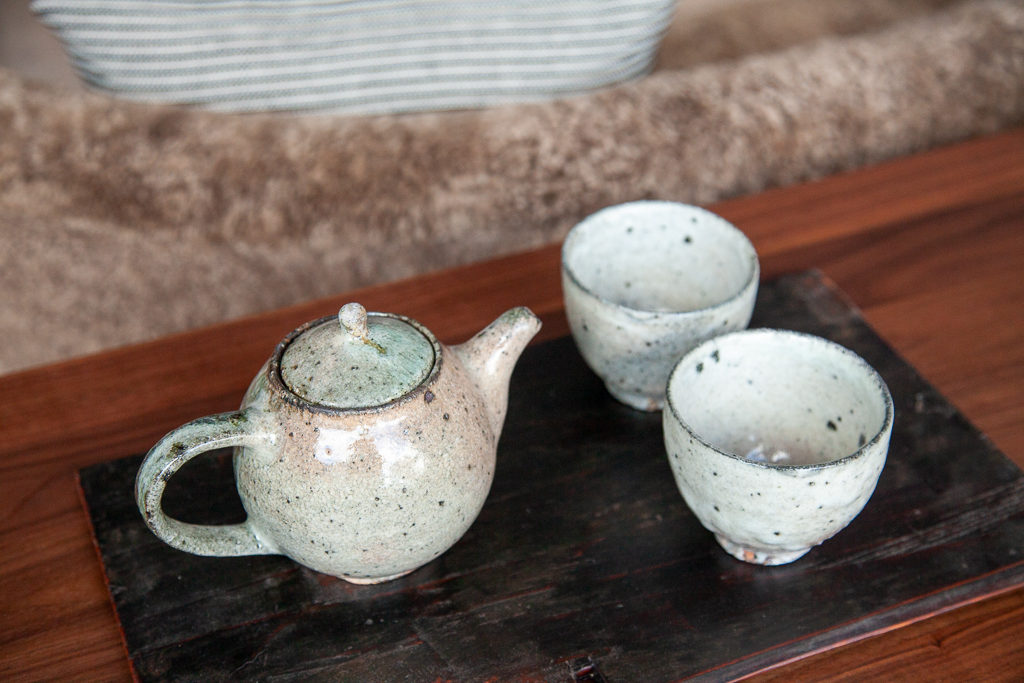


Login
Log in if you have an account
Register
By creating an account with our store, you will be able to move through the checkout process faster, store multiple addresses, view and track your orders in your account, and more.
Create an accountToru Hatta Exhibition

I am curious to know about the Mishima inlay patterns that you use in your work. Can you please describe the process of creating these beautiful inlays?
The decoration of Mishima is inlaid with white makeup. The base material, which is ground on the potter's wheel, is dried a little to stabilize it so that it does not lose its shape. After that, bamboo and iron are used for carving. The type of tool used determines the atmosphere of the pattern. I put a lot of emphasis on the difference in this timing. I put white make-up on the carving, let it dry a little, and scrape off the mud that is overflowing.
Mishima I believe is a technique from Korea, do you find yourself drawn specifically to Korean pottery? Is there a particular era you are most fascinated in?
I went to Korea last year and saw a lot of old Korean ceramics. I felt that I was unconsciously attracted to the shapes and atmosphere that I liked and the spirituality of the people of that time, which I could feel from the old ceramics.
My favourite period is the Momoyama (1568–1600) in Japan. I also like old pottery vases. I also like Jomon earthenware (c. 14,000–300 BCE)—ancient Japanese pottery. The pots of Momoyama and old pottery are also Korean techniques, so maybe I like those things.
There is a wonderful depth and brightness to your white “make up” glazes. Is this referred to as kohiki? Can you tell me about some of the characteristics of this technique?
In Korea, "Kohiki", "Hakeme", and "Mishima" are all called "buncheongsa ware". When I was making Kohiki, I did not want to be bound by the old designs. However, applying a white coating to the base material is one of the basics of my work.
I think it gives more depth to my works than just applying glaze. Moreover, it also has an effect of protecting the red clay of the ground from disintegrating due to fire when firing in the Anagama kiln—an ancient type of pottery kiln brought to Japan from China via Korea in the 5th century.
What kind of environment are you creating your work in? Are you living near the ocean at the moment?
Four years ago I built a studio and house in a town that still retains the look of a 450-year-old Edo-era town, and I'm making my work there. Kongo, the highest peak in Osaka, can be seen from the window in front of the Rocro. We also have a wood-fired kiln at the same location where kiln technology was first introduced to Japan from the continent 1500 years ago. It is more than 10 km away from the sea.
Do you have any passions or interest beyond ceramics?
Besides pottery, I love the outdoors. We often go camping as a family. Also, my eldest daughter plays soccer, and now I look forward to watching her play.
Come by the shop to see Toru Hatta's pieces in person! Launching Saturday, October 17.














